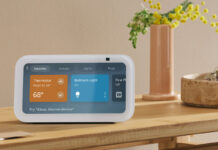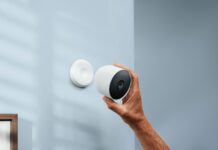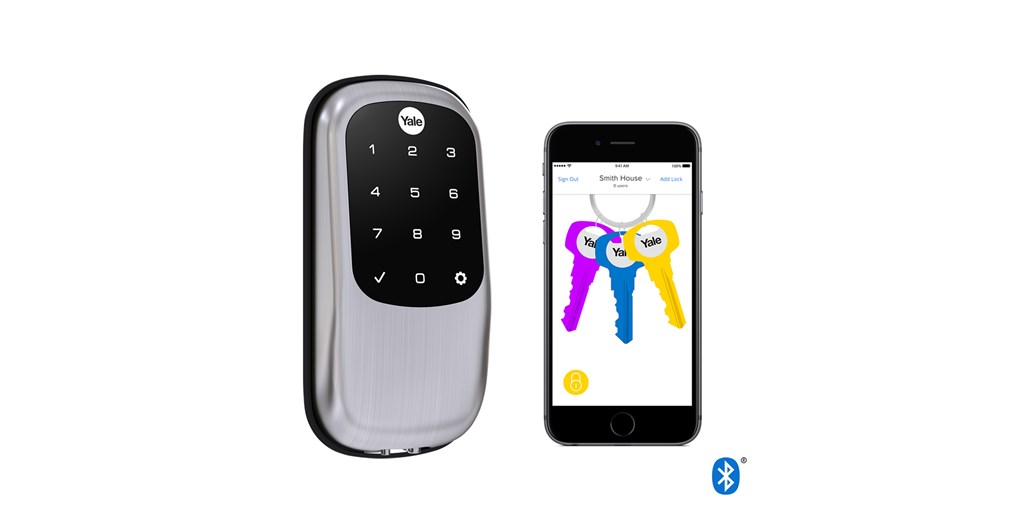
Yale is a new player to the Canadian home automation market, though they’re not new to locks in general. They’ve been around for about 150 years and are trusted by many banks and companies worldwide to trust their most valuable assets. Right from there, you know that the late Linus Yale’s company is going to do a great job with your home locks.
Yale invented the bump proof keyed cylinder lock many decades ago and now they take things one step further. The Yale Real Living Assure smart lock is a bluetooth (or if you prefer, non-bluetooth is available too) lock setup that is completely keyless, so there isn’t even a cylinder to try to bump. This is the first lock I’ve seen that relies completely on an app (or as a fallback, it’s own keypad) to completely unlock a door.
What makes this even better is the fallback option if the batteries in the unit die. All smart keypads I’ve ever come across up to now use a key as a fallback feature, which almost defeats the purpose of home keyless entry. If you’re a person that likes to stretch battery life out to the last possible second, you could be left in the cold if you forget to change the batteries and don’t have a key. Yale’s contingency plan is a 9 Volt battery terminal at the bottom of the lock. If your batteries die, you can pop a 9 volt into the holding area. It’ll charge your unit up enough to get in the house, though it won’t send you straight to the supply shelf for a change of batteries.
Yale brings us something from the future?
 The Yale Real Living Assure lock is cool. It looks like something out of the future that you’d see in a sci-fi movie. With its brushed exterior, lighted keypad and keyless design, it’s like having a piece of any starship or spaceship right on your front or back door.
The Yale Real Living Assure lock is cool. It looks like something out of the future that you’d see in a sci-fi movie. With its brushed exterior, lighted keypad and keyless design, it’s like having a piece of any starship or spaceship right on your front or back door.
The Real Assure lock has a few pre-requisites that you need to know about. The first one is software. You need to be running a fairly recent version of your phone or tablet’s operating system in order to run the software. My iPhone was still running iOS 8 when I got the product in, for example, and I had to update since it requires iOS 9 to operate. Android users will have to be running a pretty recent version of their operating system as well. I’ll talk about the other major pre-requisite when I start discussing the design itself.
Easy to Install…or is it?
If you’ve read many of my previous installation-required reviews, you know that I’m not the greatest handyman in the world. I can hold my own for most basic projects but you may as well play the Chariots of Fire theme while I’m doing anything since I move at a snail’s pace.
That said, changing a deadbolt is a 5-10 minute project, even for me. It’s really no harder than unscrewing, removing the old pieces, aligning the new ones and screwing them together. On the surface, this is really the extent of installing this lock. While you have to feed wiring from the external circuitboard to the internal one, it barely adds any time.
Here’s where things get weird with the Yale Assure Lock. The lockmakers have made the wild assumption that your door not only needs a small deadbolt cylinder but your door itself is fitted with a mortise cutout.
If that sounds like a mouthful, it certainly is. But a picture says a thousand words. Here’s the style of door I mean.

At this point, you should go examine whichever door you’re wanting to add a smart lock to in order to see whether you need to start cutting holes. The thing is, the cylinder lock itself has to have this pre-requisite met because it’s the only one in the box and it’s all pieced together in a way that you can’t ditch the latch plate. The only other comparable I can think of to this lock is the original Weiser Kevo, and it came with a lot of extra pieces to work out properly on different door types.
None of my doors have this latch and strike system on any doors. Neither does my dad’s house or 2 of my friends’ houses. Finally, I took a drive to visit my mother’s house, and her garage door DID have that style of lock. Huzzah! Time to install!
Installation attempts thwarted
Here’s another spot that I found that things won’t work out so well for some of you. The deadbolt cylinder itself is smaller than some of the ones you’re used to, but only out of the box. Thankfully, the cylinder itself does extend through the use of a button extension, so it will easily fit in most door styles.
Once I finally got the deadbolt taken off the door I thought was compatible, guess what happened?
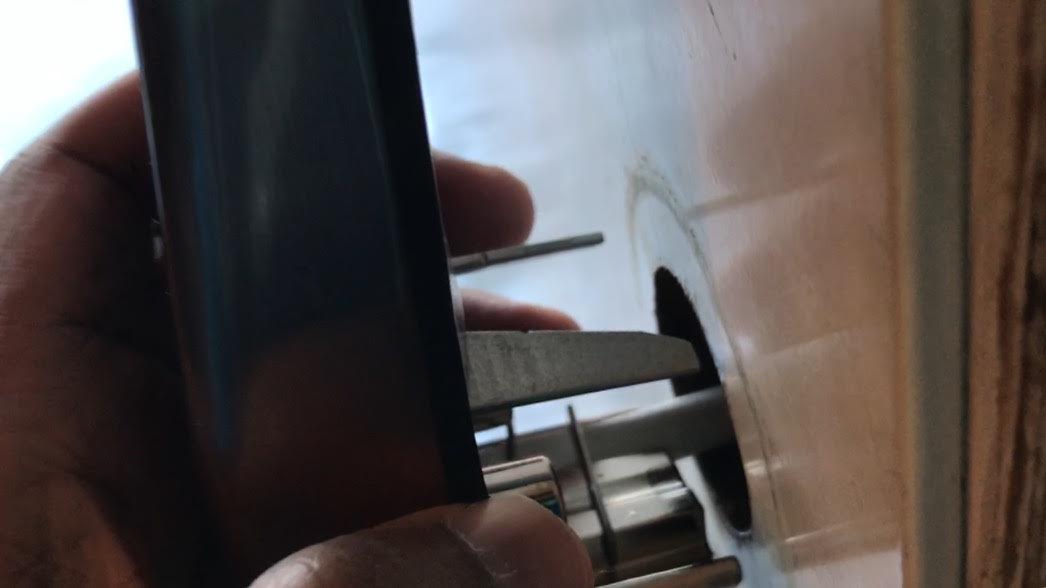
The fitting hole was too small! Unfortunately, there is no flexibility around this one unless you bore a bigger hole in your door. Yale does include templates in the instructions to accomplish this, however, since this does make the hole bigger than most standard deadbolts, you have to be very sure this is what you want to do.
This was the part of the install in which I had to resign myself to the fact that this wasn’t going to work on any door I own or the places I checked. However, it wasn’t going to stop me from testing the functionality. As you see below, I did put it all together inside the house to show off the keypad functionality and programming the app. The video will show more in this way visually, but it’s very simple to put together in the right circumstances. It’s a simple wire pass from the external keypad to the interal chamber.
The batteries are contained in the internal housing with the manual hand deadbolt. Once again, it’s really similar in theory to the original Weiser Kevo, only with a keypad.
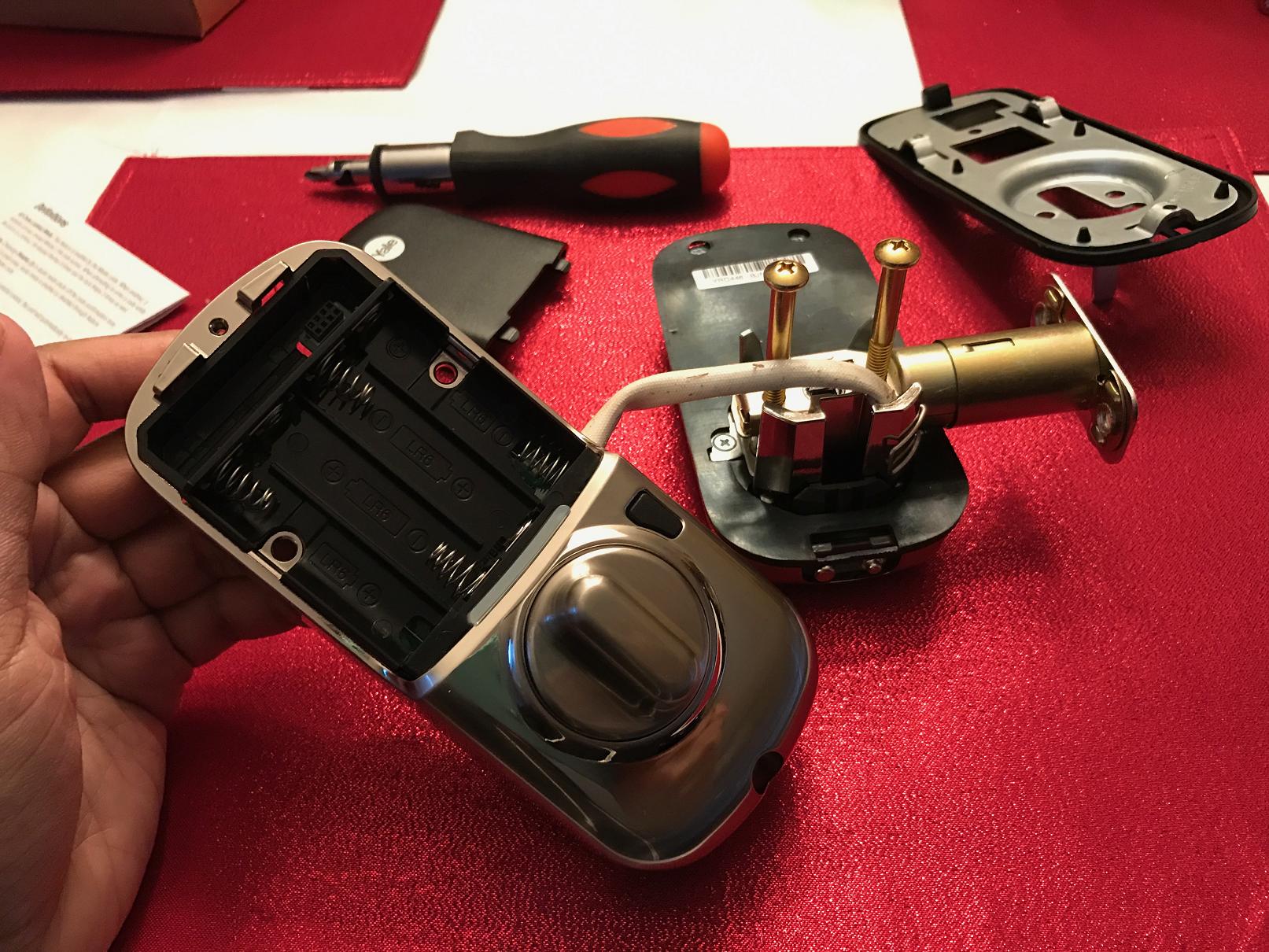
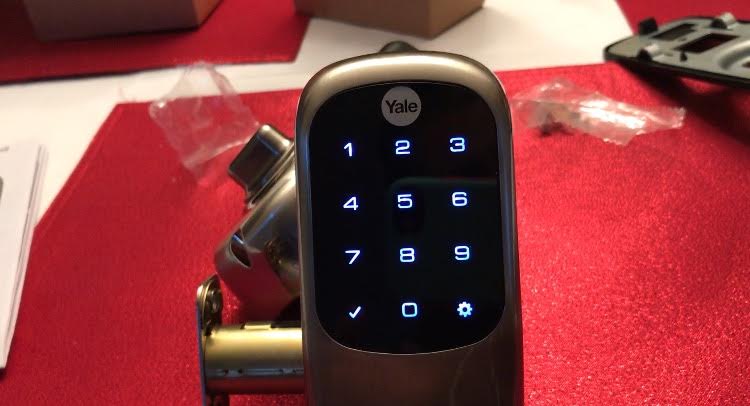
When it installs
At the risk of sounding too negative, this is actually a really good little device once you have it installed. The Yale Assure app is very simple to work and operate, and the concept itself is great. Once you program a master code into your lock, you can assign it dozens of other manual and electronic passcodes to provide guest passes and keep an eye on who’s been visiting and when. I also like the idea of the cutesy hand crank you have to do to unlock the door, as if your phone is the key (which I guess technically it is!)
In the end
I will be the first person to admit that when I set out to review a product, I tend to have time management and ease of use top of mind. We all look at products with different lenses and handyperson skill levels. However, in a way, I think we’re all tied together by a desire to manage time and not create massive issues out of seemingly small projects.
The reason that the Yale Real Living Assure lock is so difficult to recommend isn’t because it’s a bad product. Yale does things with this lock that none of their other competition have thought of, really. That alone should set it apart from the rest. The reason that it’s hard to recommend is simply because I literally looked at 4 dozen doors (of all ages and types) in 5 different locations, and not a single one was compatible with it out of the box because of the latch and strike and then the size of the hole for the unit housing. For the purpose of a review and a video, it really doesn’t matter whether I install it on my front door, back door, kitchen or garage door. Yale still made it really difficult for me to do this because I wasn’t prepared to start cutting into doors because it would have literally left the existing deadbolt useless afterward. In other words, installation of this does have to be permanently committed to because you’re going to have some difficulty with the aftermath if you decide to go back on your decision.

The thing is, unless Yale starts releasing this to work with multiple cylinder types (like Weiser did with their original Kevo) and smaller housings, they’ve cut the legs off much of their interested market. This is such a good idea for a product (especially with the battery backup to re-charge) that I can’t believe simple design oversights mean that unless you’re willing to cut into your door to make it fit, you’re out of luck.
I don’t really know what else to say. The Yale Real Living Assure Lock is good. It’s just not for everybody. It’s available now in both forms (bluetooth and non-bluetooth) at Best Buy.



